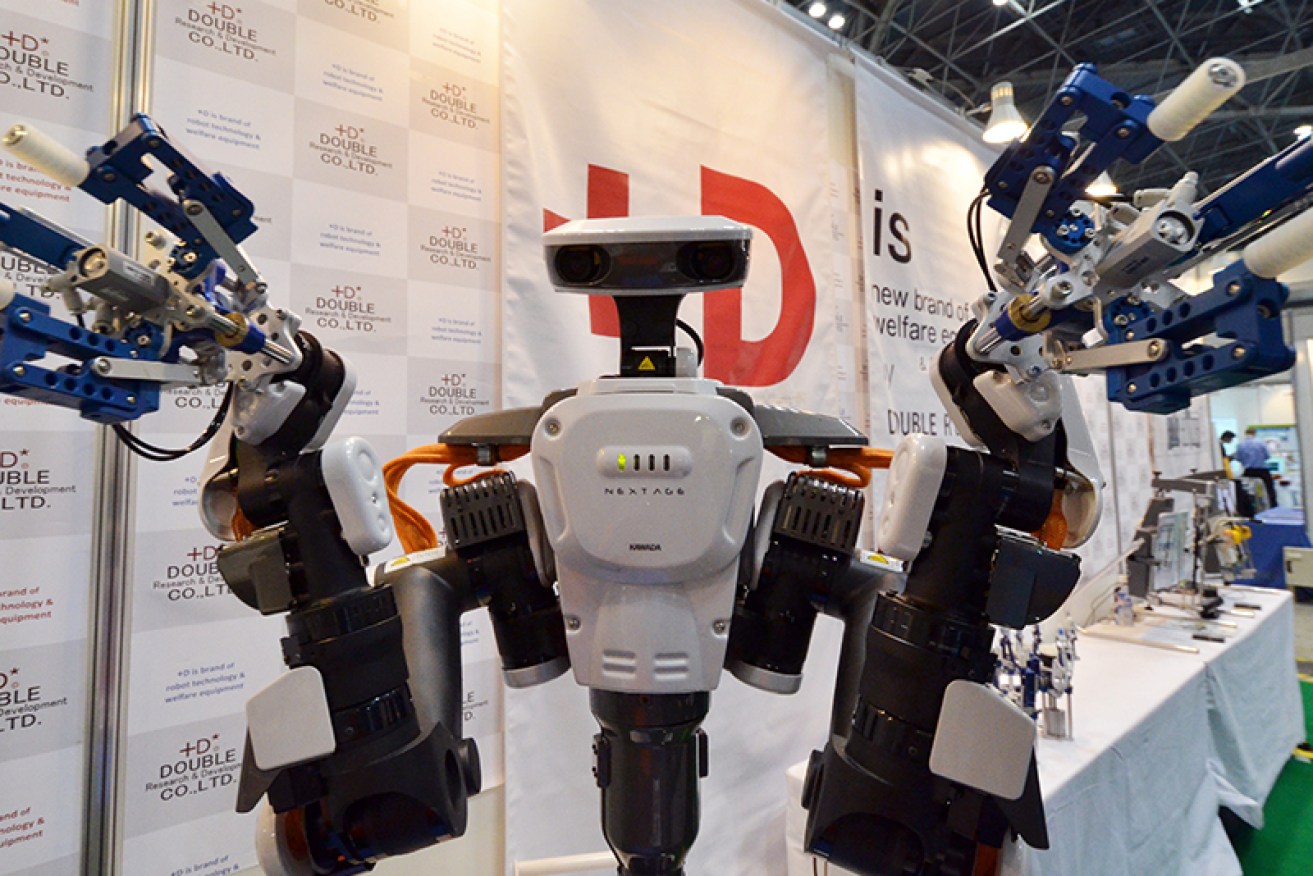Will your job survive the robot revolution?


Getty
They’ve long been popular fodder for Hollywood films, but could we soon be seeing more robots in Australian workplaces?
As major companies hire retail robots and stack their production lines with machines, the day when robots make up a significant portion of the workforce appears to be drawing nearer.
• Interstellar movie review: stunningly beautiful
A recent study conducted by the Creative Robotics Lab at the University of NSW found that, when it comes to the presence of robots, Australians are even more comfortable around artificial intelligence than their Japanese counterparts.
Professor Mari Velonaki, director of the Creative Robotics Lab, says we have nothing to fear.

‘Pepper’ will start work in December selling coffee products for Nestle. Photo: AAP
“At least in Australia, we are looking not at replacing humans but creating complimentary relationships. Humanoid (robots) could be found in hospitals, as tour guides or even in artworks.”
While some jobs will be replaced, “these will usually be jobs where there’s a risk factor for humans,” Professor Velonaki says.
“For example, we still have accidents in mining around the world so systems are being developed that can work in different areas that humans can’t be in.”
Here are the industries likely to be on the front line as artificial intelligence moves into the workforce:
Retail
Food giant Nestle recently announced the implementation of 1000 humanoids as sale clerks in its Japanese coffee stores.
US hardware store Lowe’s soon followed suit, revealing it would trial robots on wheels, equipped with cameras, as customer service assistants.
Entertainment
One of the more startling additions to the robot world is perhaps Kodomoroid and Otonaroid – eerily life-like humanoids who can read the nightly news.
The word-perfect, multilingual androids were created in Japan and are said to be devoid of human error.
Similarly, American engineer Heather Knight decided to invent the ultimate comedy sidekick in the form of Ginger, a stand-up comedian robot.
Ginger cracks jokes like “If you prick us in our battery pack, do we not bleed alkaline fluid?” and can pick up on social cues like laughter and clapping.
Emergency services
The US Navy have been testing the ability of robots to extinguish fires aboard naval vessels in order to protect the lives of soldiers on board.
The humanoids have the potential to operate hoses and recognise flames, but their movements will be dictated by the vocal command of those nearby.
Unmanned aerial vehicles and drones of various kinds are increasingly being used by militaries around the world.

The PARO healthcare robot. Photo: Getty
Healthcare
Arguably the industry receiving the greatest benefit from robotics, healthcare professionals will increasingly receive assistance from humanoids who can do the heavy lifting.
“In rehabilitation robotics will play a big part for our elderly population, like special walking frames that get feedback from the user,” Professor Velonaki says.
“There’s also a robot that helps nurses to lift patients so they don’t hurt their back. The robots do the lifting and the nurse holds the hand of the patient and talks to them.”
Dancing robots are also being used to treat and educate autistic children in the United States with more than 50 applications, including story-telling abilities, singing and spelling exercises.
Meanwhile, the adorable PARO robot , a fluffy toy that resembles a seal, is a source of comfort and monitoring information for those in aged care homes.
“It’s soft but at the same time it takes measurements of heart rate and blood pressure,” Professor Velonaki explains.
“You can imagine a child in intensive care that can’t have toys but can have something that looks like one and can monitor them and alert doctors.”
Sport
Robots are already staking their claim as sports stars thanks to the Robot World Cup, which this year took place in Brazil.
Teams from around the world competed for the unusual title, with the University of NSW’s designs taking out the top spot for Australia, beating Germany in the final.








